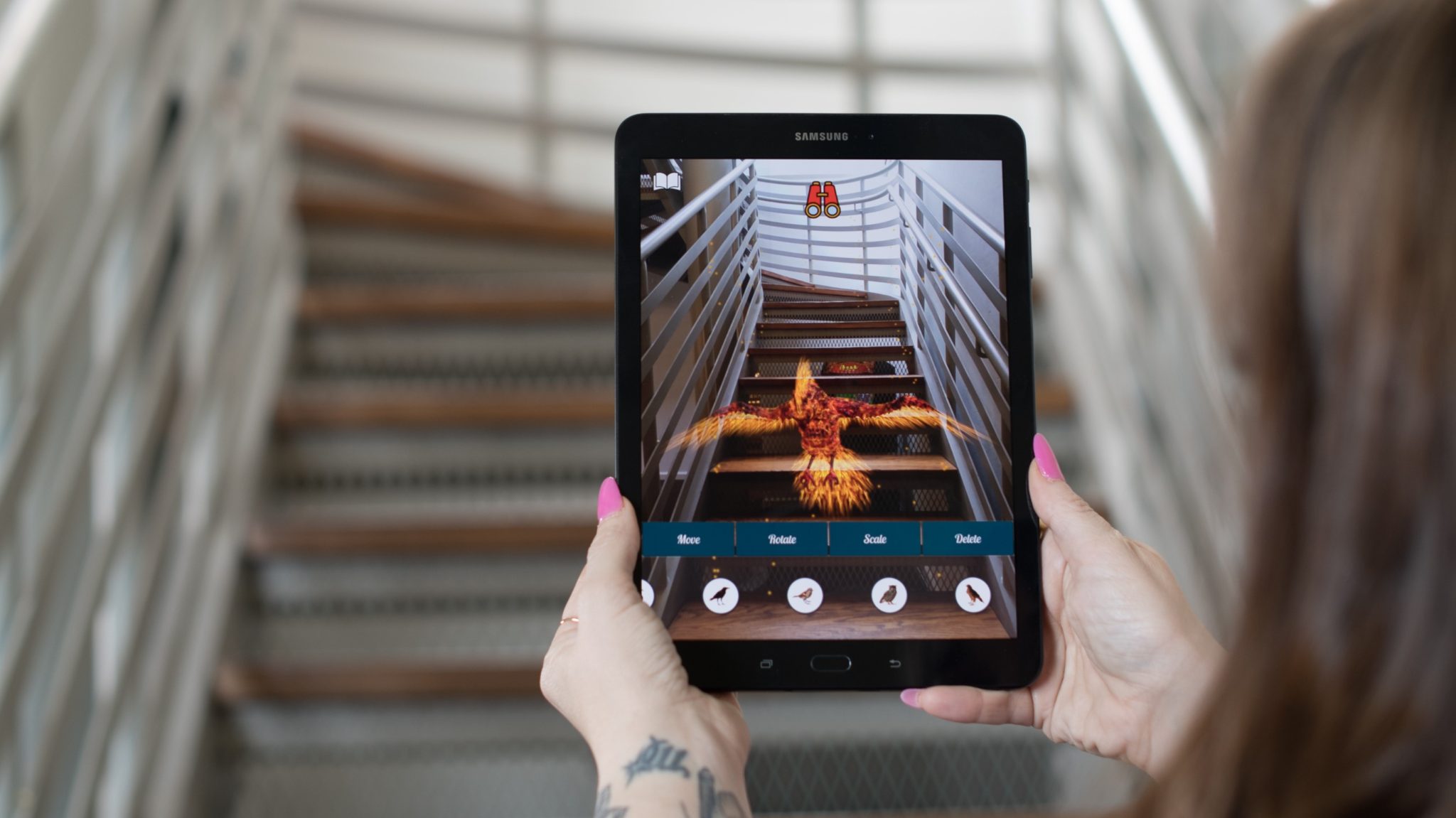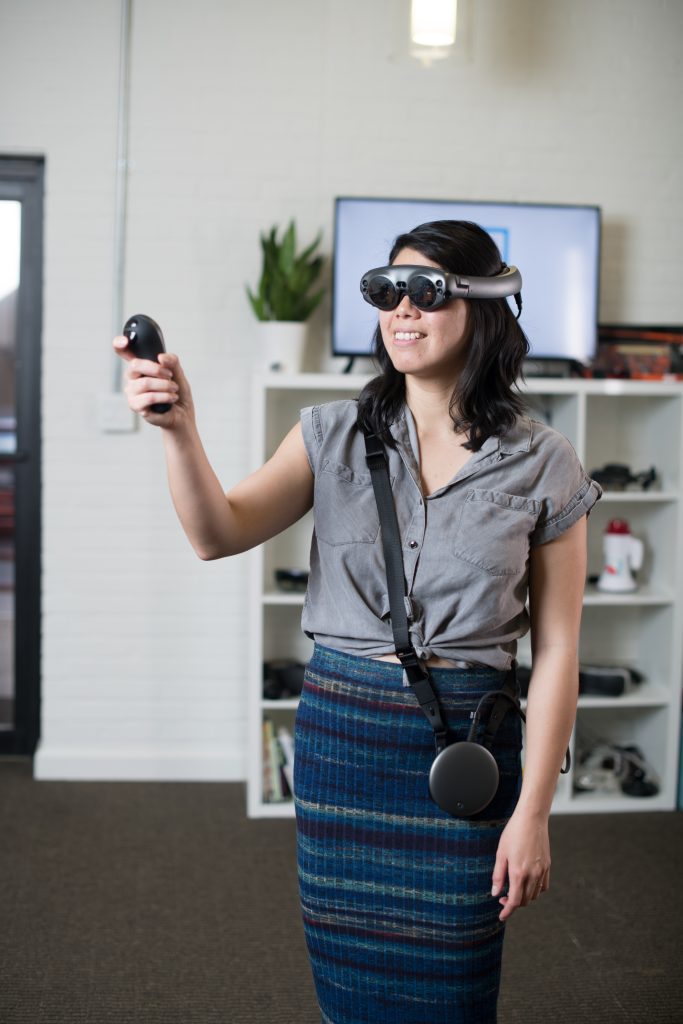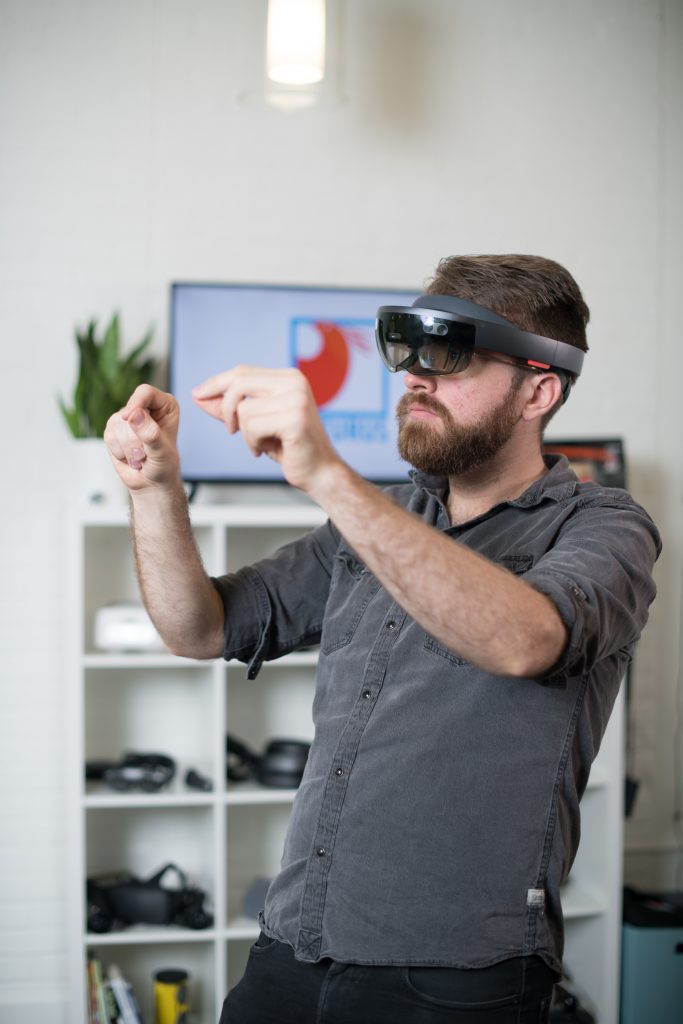
06 Nov Introduction to Augmented Reality
We’re taking a look at one of the most talked-about topics this year, Augmented Reality.
What is augmented reality?
Augmented reality is the application of digital information onto the real world. This can be experienced with a mobile device, tablet, or wearable glasses (like smart glasses or the Microsoft Hololens). In the case of a mobile device, the program displays both the real world (passed through the phone’s camera) and the digital content overlaid on the screen. For wearable devices, the user is seeing their environment around them and the glasses support the projection of digital information.

Magic Leap One headset 
HoloLens
How does the program produce the content in the right place?
There are multiple ways to activate an augmented reality experience: geolocation, tracker, and ground plane tracking. Harry Potter: Wizards Unite is an example of geolocation-based AR. The characters are not tracked to a specific object or image, just the location, so the objects can spawn anywhere in that geofence. Wizards Unite takes it one step further by incorporating ground plane tracking to properly place the characters which we’ll get into a little later. With a physical tracker, brands can create experiences that are activated by their logo or other marketing collateral. This is a great feature when creating an exclusive experience because consumers are required to buy the product or be provided a special tracker to participate. The third way to activate an AR experience is through ground plane tracking or mapped experiences. The AR experience content is mapped to an environment using depth mapping or camera data combined with the movement of the device. These techniques are what make Snapchat face filters and apps like IKEA Place possible.
How can my customers access the AR experience?
In the past, if you wanted to publish augmented reality content it required you to have an app or tie into a 3rd party AR apps like Blippar. New platforms make WebAR possible meaning customers no longer have to download an app. Instead, they can scan a QR code or go directly to a landing page to activate the augmented reality experience. This takes away some of the friction we saw previously with AR and makes it more user-friendly.

Developer Tools
Spark AR has made developing and deploying AR to phones a relatively seamless process. Once you understand the basic relationship and process of developing for VR and AR in similar programs like Unity, Spark simplifies it by adding features that function in the specific way that users use filters on Instagram and Facebook. For example, the facial recognition technology is designed so that beginners can understand the many elements that make up the filters that animate and react to very specific facial expressions, without having to use code. For the “Window to the Jungle” piece (as seen in the picture – AR Artwork created by Jane Nguyen and Shelby Vecchio for a recent XR Atlanta Art Showcase) a black, paper fly acted as the target tracker that triggers the emergence of the digital expansion of the jungle through the “window” of your phone screen. Spark AR makes it easy for creators to publish their custom work directly to Facebook and Instagram if they want to work specifically with face filters, target recognition, or altering physical surroundings.
With tools like ARCore for Android and ARKit for iOS, developers can create tracker-less augmented reality experiences with more precision, allowing items to be placed in your environment to scale. It’s practical for visualizing products in the physical world. We see this being especially useful with space planning when over-sized objects are involved like furniture, machinery, or physical structures.
Adobe officially announced the release of Aero in November of 2019. It is a user-friendly AR builder that doesn’t require coding. The app is currently available for iOS devices. Individuals can create AR scenes using the starter assets provided by Adobe or by uploading their own files.
And of course, no augmented reality developer tools list would be complete without gaming engines like Unity 3D.
Unity 3D has put a lot of hard work into becoming an easy to use platform. Much like the Adobe suite is used for 2D content, Unity has just about everything needed for 3D content creation. If what you need is not in the core system, there is most likely a plugin option that can help speed things up. This makes it ideal for prototyping and quick turnaround content. But with a little tweaking can make sustainable long-term programs as well.How do I get started?
When implementing augmented reality into your brand, a proper evaluation is important. The Futurus team is here to help assess project goals as well as final distribution of the immersive experience. We take that information and make the best recommendations for your business. We schedule a VR/AR 101 meeting at our Atlanta office (or web conference if you’re not in town) to make sure everyone is up to speed with the latest technology. After that, we can get to work on bringing immersive technology to your company through augmented reality programming. Contact Futurus today to get started.






